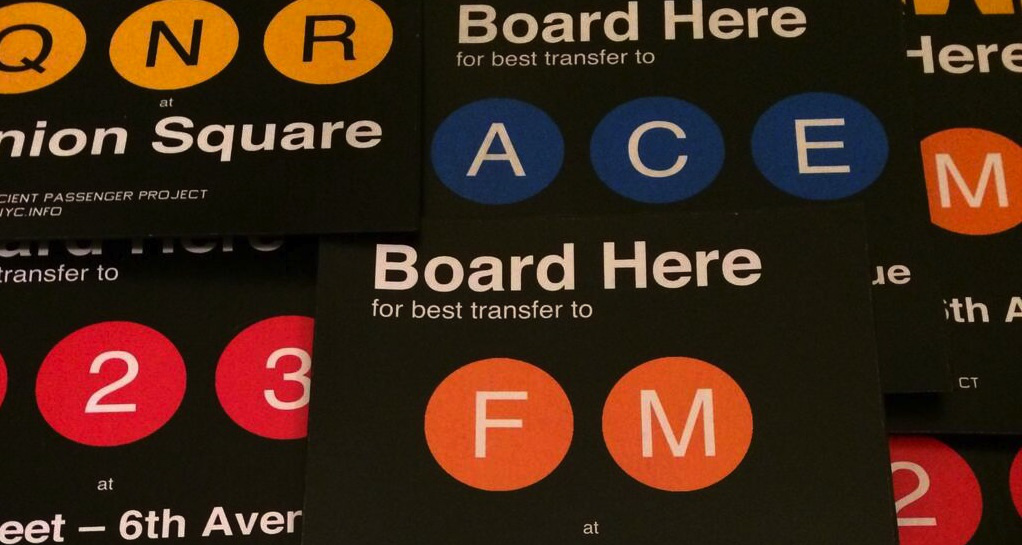The Pros & Cons Of These Helpful-But-Illegal Subway Signs

(Twitter: @EPPNYC)
Gothamist reports on the Efficient Passenger Project, which aims to help all NYC mass transit users by posting signs that indicate the best places to stand for a train depending on which line you’re going to transfer to.
The Metropolitan Transit Authority — which operates NYC’s subways, buses, and the Metro North commuter rail lines — says these signs, however helpful will be taken down because they are against the law, but should they leave them up, or at least use the EPP’s information to post similar signs of their own?
PROS
The positives of such signs are rather obvious. The NYC subway system can be incredibly confusing, not just to newcomers, but to city residents who are taking a route they don’t normally travel.
Even the most hardened subway user has gotten off his or her train only to realize they need to walk the entire length of the platform just to reach the stairs to their connecting train — and how many times has that delay resulted in the commuter getting to the next platform just as the train they need to catch is exiting the station?
Knowing where to stand and where the correct exits, stairwells, ramps, and elevators are can shave many minutes — and much aggravation from one’s subway trek, and so it makes sense that this information should be shared with the public and not just learned from months and years of train travel, right?
“It’s a public, civic service,” explains the EPP’s founder. “The project is an attempt to kind of rationalize some of that environment, and just make a more enjoyable, faster commute.”
CONS
There’s a reason many commuters don’t go broadcasting all this helpful information to everyone on the train platform, and it’s not (always) about being rude or trying to hold on to some precious secret.
Subway cars can be crowded enough during rush hour, and the cars located closest to the best transfer spots are often the most packed with people. Advertising to the world that this precise spot is the ideal place to stand may only result in more congestion and possible delays as people attempt to squeeze in and out of specific train cars.
“These signs have the potential to cause crowding conditions in certain platform areas and will create uneven loading in that some train cars will be overcrowded while others will be under-utilized,” says an MTA spokesman, adding that “regular customers don’t need these signs to know which car they should enter.”
Perhaps there is a middle ground that could improve commuter efficiency without causing jam-ups on the platform. Maybe instead of signs on the platform, the MTA provided these sort of tips on its website or a mobile app. Or there could be indicators on the platforms, but rather than saying “Board Here” and calling out a specific spot, they might provide more general information like “Board Toward This End,” allowing subway users to spread out among multiple cars while still feeling confident that they won’t be wandering around looking for their transfer connection.
Want more consumer news? Visit our parent organization, Consumer Reports, for the latest on scams, recalls, and other consumer issues.

